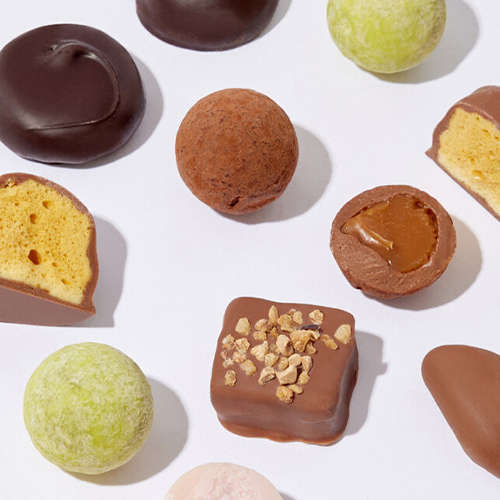- Australia / AUD $
- Canada / CAD $
- China / CNY ¥
- France / EUR €
- Germany / EUR €
- Hong Kong SAR China / HKD $
- Ireland / EUR €
- Italy / EUR €
- Japan / YEN ¥
- Kuwait / USD $
- Macao SAR China / HKD $
- Netherlands / EUR €
- Qatar / USD $
- Saudi Arabia / USD $
- Singapore / SGD $
- South Korea / KRW ₩
- Spain / EUR €
- Taiwan / TWD $
- United Arab Emirates / USD $
- United Kingdom / GBP £
- United States / USD $
- Not yours? Read more
Tell us what you think
Shop in your local currency and language
You are currently in United Arab Emirates AE / USD $ store
- English
- English
- English
- English
- English
- English
- English
- English
- English
- English
- English
- English
- English
- English
- English
- English
- English
- English
- English
- English
- English
Did you know that we deliver to 130 countries or regions and offer a range of delivery options to suit you wherever you are in the world? Find out more
Sign up once to our Selfridges+ service and you can enjoy unlimited deliveries wherever you are in the world. FIND OUT MORE
International delivery
With almost everything on selfridges.com available for International Delivery, you can send your order to 130 countries or regions around the world, including North America, Australia, the Middle East and China.
Although we only offer 20 currencies to browse in online, you can still deliver to all of the following countries or regions:
- Algeria
- Andorra
- Antigua and Barbuda
- Aruba
- Australia
- Austria
- Azerbaijan
- Bahrain
- Bangladesh
- Barbados
- Belarus
- Belgium
- Belize
- Bermuda
- Bolivia
- Botswana
- Brunei
- Bulgaria
- Cambodia
- Canada
- Cayman Islands
- Chile
- China
- Colombia
- Costa Rica
- Croatia
- Cyprus
- Czech Republic
- Denmark
- Dominica
- Dominican Republic
- Ecuador
- Egypt
- El Salvador
- Estonia
- Finland
- France
- French Guiana
- Germany
- Gibraltar
- Greece
- Grenada
- Guadeloupe
- Guatemala
- Guernsey
- Guyana
- Honduras
- Hong Kong
- Hungary
- Iceland
- India
- Indonesia
- Ireland
- Israel
- Italy
- Jamaica
- Japan
- Jersey
- Jordan
- Kazakhstan
- Kenya
- Kuwait
- Laos
- Latvia
- Lebanon
- Lesotho
- Liechtenstein
- Lithuania
- Luxembourg
- Macau
- Malaysia
- Maldives
- Malta
- Martinique
- Mayotte
- Mexico
- Monaco
- Montserrat
- Morocco
- Myanmar
- Namibia
- Netherlands
- New Zealand
- Nicaragua
- Nigeria
- Norway
- Oman
- Pakistan
- Panama
- Paraguay
- Peru
- Philippines
- Poland
- Portugal
- Puerto Rico
- Qatar
- Reunion
- Romania
- Rwanda
- Saint Kitts and Nevis
- Saint Lucia
- Saint Martin (French part)
- San Marino
- Saudi Arabia
- Serbia
- Singapore
- Slovakia
- Slovenia
- South Africa
- South Korea
- Spain
- Sri Lanka
- Suriname
- Swaziland
- Sweden
- Switzerland
- Taiwan
- Tanzania
- Thailand
- Trinidad and Tobago
- Turkey
- Uganda
- Ukraine
- United Arab Emirates
- United Kingdom
- United States
- Uruguay
- Venezuela
- Vietnam
ZERO-WASTE EATS
Words: Amy Newson
Creating a zero-waste household sounds daunting, doesn’t it? That’s why we’ve rounded up some of our Selfridges foodie family, from our amazing chefs to our greengrocers and in-house food waste heroes, to give us a hand with the ‘hows’ and the ‘whys’. Offering handy tips to try at home, our food experts will shine a light on how easy (and delicious) it is to create recipes from food that would have otherwise gone to waste…
HOW OUR CHEFS TACKLE FOOD WASTE AT HOME AND AT WORK
We chatted to Mark Taylor, Executive Head Chef at Selfridges, while he cooked up a zero-waste feast just for us, with the help of Grant Clark, our Head Chef at The Corner Restaurant at Selfridges London.

Grant Clark, Head Chef at The Corner Restaurant Selfridges London, prepares a zero-waste meal
How did Selfridges’ approach to creating less food waste develop?
The original inspiration came from our 2017 project ‘WastED on the Roof’ with chef Dan Barber of New York’s Blue Hill restaurants. This thought-provoking food-waste pop-up on the roof of our Oxford Street store saw us collaborate with local farmers, fishermen, suppliers and retailers to reimagine by-products at every stage of the food chain. After the pop-up, our chefs were inspired to seek out new ways of repurposing food, starting with our chef James Holah creating a delicious marmalade using orange waste from our juicing counter.
We are always creating special ‘less waste’ recipes in our restaurants and Foodhall – how do you go about putting these together?
We look at what we’ve been receiving from our suppliers or if there’s a theme to the waste we generate – this could be seasonal produce from our Foodhall. We inspire our teams to think differently and to come up with ideas, from turning veg pulp from our smoothie counter into veggie burgers, to using offcuts of cheese to make toasties, or salt-beef trimmings to make Scotch eggs.
What is your go-to recipe for leftover bits in the fridge?
I love making cauliflower cheese using cauliflower stalks (these often get thrown away) and leftover cheese trimmings for the sauce.
What tips would you give someone who is trying to reduce their food waste?
Buy small and often, quality always counts and looks for products that are high in protein and fibre. Less is more, so keep your recipes simple and full of fresh ingredients.
Cooking up a storm has never looked better
OUR ZERO-WASTE RECIPE
Less Waste, More Taste: summer vegetable ragu with fresh pasta and ricotta salata made by Grant Clark, Head Chef at The Corner Restaurant, Selfridges London.


INGREDIENTS
2 cups fresh strozzapreti, or a box of your favourite pasta
2 ripe tomatoes that have gone a little too soft, chopped and juiced
1 red onion, sliced
1 courgette, sliced into coins
4 cloves of garlic, smashed and sliced
½ bunch of basil, torn and stems reserved
4 glugs of olive oil
Grated salted sheep’s milk ricotta to top
1 tbsp seasoned breadcrumbs made from a few heels of old bread
Salt and chilli flakes to taste
1.
Heat a sauté pan with the olive oil and quickly sauté the onions and garlic until soft.
2.
Add the courgette and cook for another 5-8 minutes until soft.
3.
Add the tomatoes and fry until they turn a brick red.
4.
Boil your pasta in salted water until al dente then toss with the vegetables and add a little pasta water to create a creamy sauce.
5.
Top with grated cheese and a sprinkling of crunchy breadcrumbs.
HOW OUR GREENGROCERS REDUCE FOOD WASTE
Our greengrocers, Natoora, work hard to reduce waste in their food system by overseeing the process, from the farm to delivery. We talked to Sarah Holah, Head of Sales at Natoora, to find out more.

How does Natoora ensure the least amount of food is wasted?
We have found that some of the ugliest produce is actually the most flavour-packed – for example, spotting on our nectarines is a sign of high sugar concentration, and our Bull’s Heart Tomatoes with their distinctive scarring are some of the most delicious tomatoes we have ever eaten. A huge part of what we do is educate the consumer to appreciate these natural defects. Our fresh produce also doesn’t have a use by date. Instead, we let people make their own decisions on freshness based on what they see in front of them.
How do you tackle food waste in your day-to-day lives?
If you have the space, growing your own fruit and veg is a great way to reduce waste. Picking what you need, when you need it, means nothing is lost in transition.
What is your go-to recipe for using bits in the fridge?
A Panzanella [an Italian bread and tomato salad] is brilliant in the summer, if you have some stale bread and some good tomatoes.
As a company, we want to make sure that the land our farmers use is actually contributing to feeding people, as the amount of land that’s used right now to grow surplus produce, if turned into forests, could theoretically offset 100% of greenhouse gases from fossil fuel combustion.
– Sarah Holah, Head of Sales at Natoora
HOW OUR FOOD BUYERS WORK TO REDUCE FOOD WASTE
Jessica Abela and Ellie Tomassi, from our food buying team, have been working on a project to create a range of ‘Less Waste, More Taste’ Selfridges Selection preserves and condiments. These jars of delicious goodness have been made with ingredients from Natoora, in our Foodhall, which would have otherwise gone to waste.
Tell us about the ‘Less Waste, More Taste’ Selfridges Selection range
JA: ‘Less Waste, More Taste’ is an initiative started by our chefs in 2017 that has been successfully used across our restaurants. As a product developer, I wanted to be able to widen the reach of this movement. Myself, chef James Hollah and food buyer Ellie Tomassi came up with the idea to work with our fabulous fruit and veg supplier Natoora to utilise any waste they may have and turn it into delicious preserves and condiments.
ET: One of our amazing partners, Natoora, has always been honest and upfront about the amount of perfectly good fruit and veg they have been unable to sell. We were inspired by other brands we work with, like relish, ketchup and mayo makers Rubies in the Rubble, and our own team of in-house chefs who make dishes using waste products. We thought it was about time that we worked our values into our range of Selfridges Selection branded products.

How do you tackle food waste in your day-to-day lives?
JA: I am a big fan of meal prepping for the week. Knowing what you’re planning to eat, and the quantities, helps greatly when cutting down on food waste.
ET: I try to shop smaller and more often to ensure I am not buying more than I need.
What is your go-to recipe for leftover bits in the fridge?
JA: For me, it has to be oven-roasted veggies. It’s a great way to use up any of the veggie stragglers hanging around in your fridge or that random celeriac. Roasting these with some great olive oil, stock and seasoning and then finishing off with a classic tahini sauce is an easy, no-fuss meal.
ET: I love making frittatas, they are so easy and no matter what you put in them, always seem to taste delicious. At the moment, I am working my way through all the summer squash I have grown, so I’ve had a lot of courgette, new potato and feta frittatas lately…
What tips would you give someone who is trying to reduce their food waste?
JA: Never shop when you’re hungry! For me, that’s a sure-fire way to end up with more than I will eat – though, surplus food is a great reason to invite friends round for dinner…
ET: If you have some extra time, try making chutneys and pickles – it’s a great way to use up extra summer vegetables and they will keep for the winter.
Shop our ‘Less Waste, More Taste’ Selfridges Selection range
OUR TEAM MEMBERS ARE ALWAYS ON THE LOOKOUT FOR WAYS TO REDUCE WASTE

ABBY CHICKEN, SUSTAINABILITY MANAGER
How do you tackle food waste in your day-to-day life?
It’s been a lot of fun, cooking more from scratch. I’m also weaning my seven-month-old son, which brings a different challenge. It’s pretty heart-breaking when he fires his dinner at the wall, but for the most part he eats the same as us, so it’s not so bad incorporating what he doesn’t eat into our meals. If I need to finish another bowl of banana porridge or sweet potato mash, I may lose it soon, though!

IMOGEN HEAD,
GRAPHIC DESIGNER
What tips would you give someone who is trying to reduce their food waste?
Try filling a big bag with veggie scraps and storing it in the freezer to make slow-cooked veggie stock (literally onion and garlic skins, carrot tops, rosemary stalks, old carrots and every scrap of root veggies). I’m also always drying herbs from my garden, using the ends of loaves in the freezer for breadcrumbs (these go great with the dried herbs), and freezing that last bit of oat milk into ice cubes for cold brew coffee.

THEA BICHARD,
EDITORIAL COPYWRITER
How do you tackle food waste in your day-to-day life?
Since lockdown, rather than randomly nipping to the shop during my commute several times a week, I’ve been trying this brand-new, never-been-tried-before thing of planning the meals I’ll have for the week and then writing a shopping list so I don’t wander aimlessly around the shop and buy way more than I can actually eat. Revolutionary. Funnily enough, I no longer have half-full tins of coconut milk and questionable spinach lurking on my fridge shelves.
LET'S CHANGE THE WAY WE SHOP
Join us to discover the most exciting design innovations, retail concepts and thought-provoking ideas in sustainability, with a series of new commitments set to radically change our business.





























